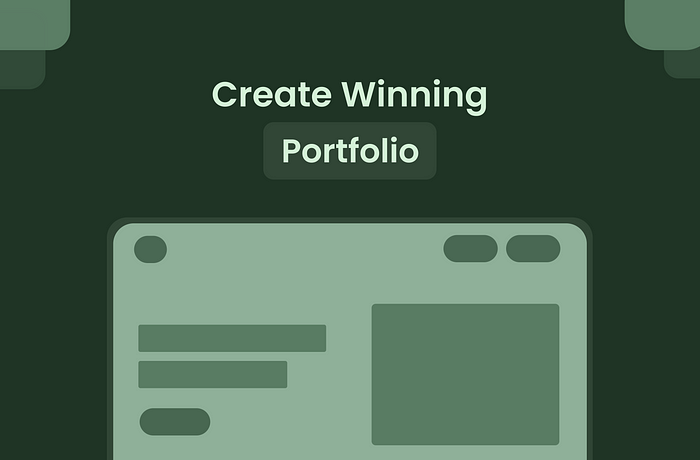

How to Create a Winning Portfolio as a UI/UX Designer?
source link: https://uxplanet.org/how-to-create-a-winning-portfolio-as-a-ui-ux-designer-e17ba073a5ea
Go to the source link to view the article. You can view the picture content, updated content and better typesetting reading experience. If the link is broken, please click the button below to view the snapshot at that time.
How to Create a Winning Portfolio as a UI/UX Designer?
7 Things to make sure of while creating your portfolio.

As a UI/UX designer, having a solid portfolio is crucial to landing your dream job or securing clients for freelance work.
Your portfolio showcases your skills, expertise, and creativity, and can help you stand out in a competitive field.
In this article, we’ll cover some tips and tricks for creating a winning portfolio that highlights your best work and sets you apart from the competition.
1. Start with a clear and concise introduction
A brief introduction to your experience and what you can deliver to hiring managers or clients should be the first section of your portfolio.
Keep it short and sweet, but highlight your key strengths and areas of expertise. For example, you might say something like:
“Hi, I’m Vikalp Kaushik, a UI/UX designer with four years of experience creating user-friendly and appealing user experiences for leading tech and startup businesses.”
2. Showcase your best work
Being selective about the projects you include will help your portfolio better represent your best work.
Choose projects that show off your creativity, problem-solving ability, and skill for making user-friendly designs.
Focus on quality rather than quantity when creating your resume; you don’t have to list every project you’ve ever worked on.
Your portfolio should ideally feature a variety of projects that demonstrate your flexibility and willingness to work on various project categories.
3. Provide context for your work
Explaining your work is crucial when displaying your projects. The problem you were trying to solve, the user requirements you were tackling, and the research designs you made must all be explained.
Giving this background enables hiring managers or clients to know your thought process and the reason for your design choices.
Moreover, it demonstrates your capability to understand user needs seriously and create solutions that address them.
4. Show your design process
The process of designing is just as important as the final product. Add sketches, wireframes, and other design documents that show how you thought through the process and arrived at the finished product.
This helps to hire managers or clients to understand your design thinking and the methodology you use to solve design issues.
5. Highlight your skills
You must be skilled in a range of fields, including design, user testing, prototyping, etc.
In your portfolio, be careful to highlight your technical skills and give examples of where you’ve used them in the industry as it helps designs.
Examples of prototypes you’ve made, user testing reports you’ve written, or design files you’ve made with well-known applications like Sketch or Adobe XD are all acceptable inputs.
6. Include testimonials or case studies
Your portfolio can create trust by including testimonials or case studies that show your ability to satisfy clients.
Ask previous clients or employers if they would be willing to provide a testimonial or case study that highlights your strengths as a UI/UX designer.
These recommendations can be included on your portfolio website, or you can set up a separate page with case studies that show off your skill at handling challenging design problems.
7. Make it easy to navigate
Make sure your portfolio is aesthetically appealing and simple to explore.
To organize your work, utilize unique headings and sections, and make sure your website is simple to access on desktop and mobile devices.
Utilize top-notch pictures and design components that showcase your own sense of creativity and taste.
Conclusion
As a UI/UX designer, building a strong portfolio needs a balance between showing your best work, giving context for your designs, highlighting your skills, and making it simple for hiring managers or clients to explore.
Using these strategies, you may create a portfolio that showcases your skills and separates you in a competitive pitch.
Subscribe here to get new articles delivered right to your inbox!
Follow me on Twitter for quick and insightful design tweets.
I’ll see you soon. Keep Designing.
Recommend
About Joyk
Aggregate valuable and interesting links.
Joyk means Joy of geeK